Best tremolo pedals for guitar 2025: Give your tone a shake-up with these killer effects
From vintage amp-style wobble to aggressive helicopter chops, our expert guide is here to help
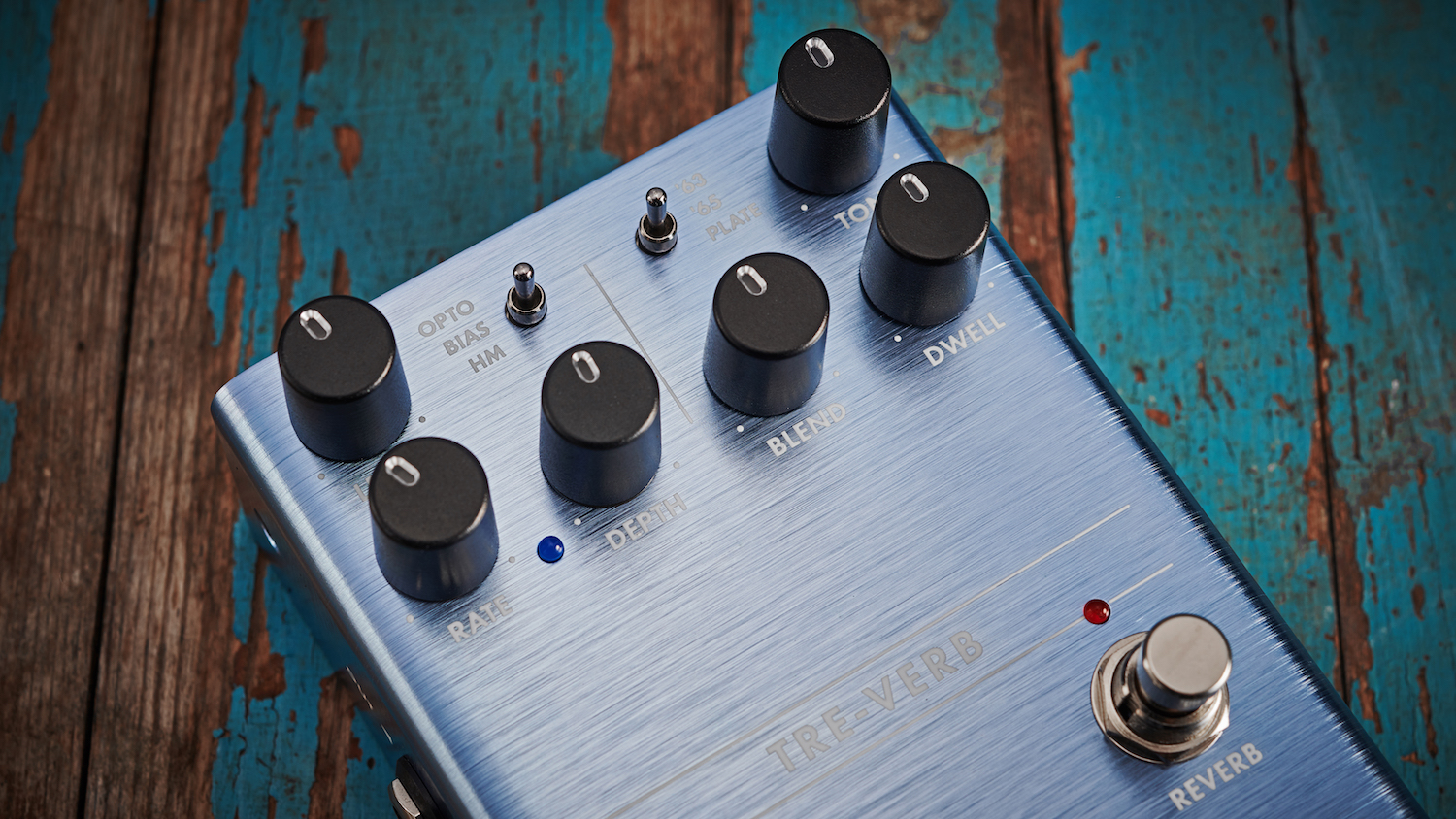
Tremolo is one of the earliest guitar effects and was commonly found built into many ’60s tube amps, such as Fender’s Vibrolux and the Vox AC30 – and now it appears in a huge variety of stompbox guises, which is why we have such rich pickings for our best tremolo pedals guide.
Essentially, the effect is a periodic variation in volume of your electric guitar signal. Link Wray’s instrumental classic Rumble is one of the most iconic examples, as is Johnny Marr’s extreme use in The Smiths’ How Soon Is Now? and Green Day’s intro to Boulevard Of Broken Dreams. As you can hear from these songs, tremolo spans a range of wobbles and chops, so let’s help you find the best tremolo pedal to suit your needs…
What is the best tremolo pedal for guitar?
MusicRadar's got your back
Whatever tremolo sound you’re after, Source Audio’s Vertigo has you covered. Its three basic settings nail the crème de la crème of amp tremolos, including a traditional Vibrolux shimmer, the dirtier Bias wobble and the uni-vibe-esque Harmonic sound from Fender’s early-’60s ‘brownface’ amps. For wackier tones, you can tweak the shape knob or use Source Audio’s Neuro app to source alternative, more esoteric algorithms.
If you’re on a budget or just looking for a quick way to add a sense of movement to your playing, Boss’s TR-2 is a classic for a reason. Its trio of rate, depth and wave controls give you everything you need, from a gentle amp-style shimmer to a square-wave helicopter chop.
How to find the best tremolo pedal for you
When shopping for a tremolo pedal, it’s worth trying to pin down the kind of sound you’re after because there’s a huge variety of tremolo sounds out there. What virtually all tremolo pedals have in common, however, are rate and depth controls. These help you adjust the speed and intensity of the effect, while many also offer a shape knob.
Traditional tremolo pedals, such as Boss’s TR-2, would typically go between a triangle wave shape (gradual volume swells) and square wave (hard on-off) sounds, with more advanced tremolo pedals offering additional waveforms, providing more rhythmic, asymmetric settings for more experimental players.
Many tremolo pedals also aim to replicate the trems you’d find in ’60s tube amps, of which there are three main types. Optical appeared in ‘blackface’ Fender amps, and offered a kind of lopsided sine wave that became synonymous with surf and country. Bias tremolo is where actual tubes were modulated, giving a slightly dirtier, more aggressive tonality.
- Embrace the dirt with our pick of the best overdrive pedals
- Or make like Kurt Cobain and get to grips with the best chorus pedals
- Need some inspiration? Check out these gifts for guitar players
Harmonic aims to capture Fender’s ‘vibrato’ effect, which actually sounds more akin to a phaser or uni-vibe. Several pedals that ape these amp-style tremolos also include a built-in spring reverb to provide the full vintage amp experience in one stompbox.
If you’re serious about making tremolo an integral part of your band’s sound, you may also want to consider a tap tempo footswitch, which enables you to accurately sync the tremolo effect to the tempo of your song, and even subdivide it into quarter-notes, triplets and a variety of other configurations.
Lastly, when it comes to choosing the best tremolo pedal for you, it’s worth bearing in mind that, because tremolo alters the volume of your guitar signal, more extreme settings can result in a perceived volume loss. That could result in your guitar getting lost in a live scenario. Many modern-day tremolos feature volume knobs, which bring your level up and compensate for any loss in signal.
Find out more about how we test music gear and services at MusicRadar.
These are the best tremolo pedals to buy now
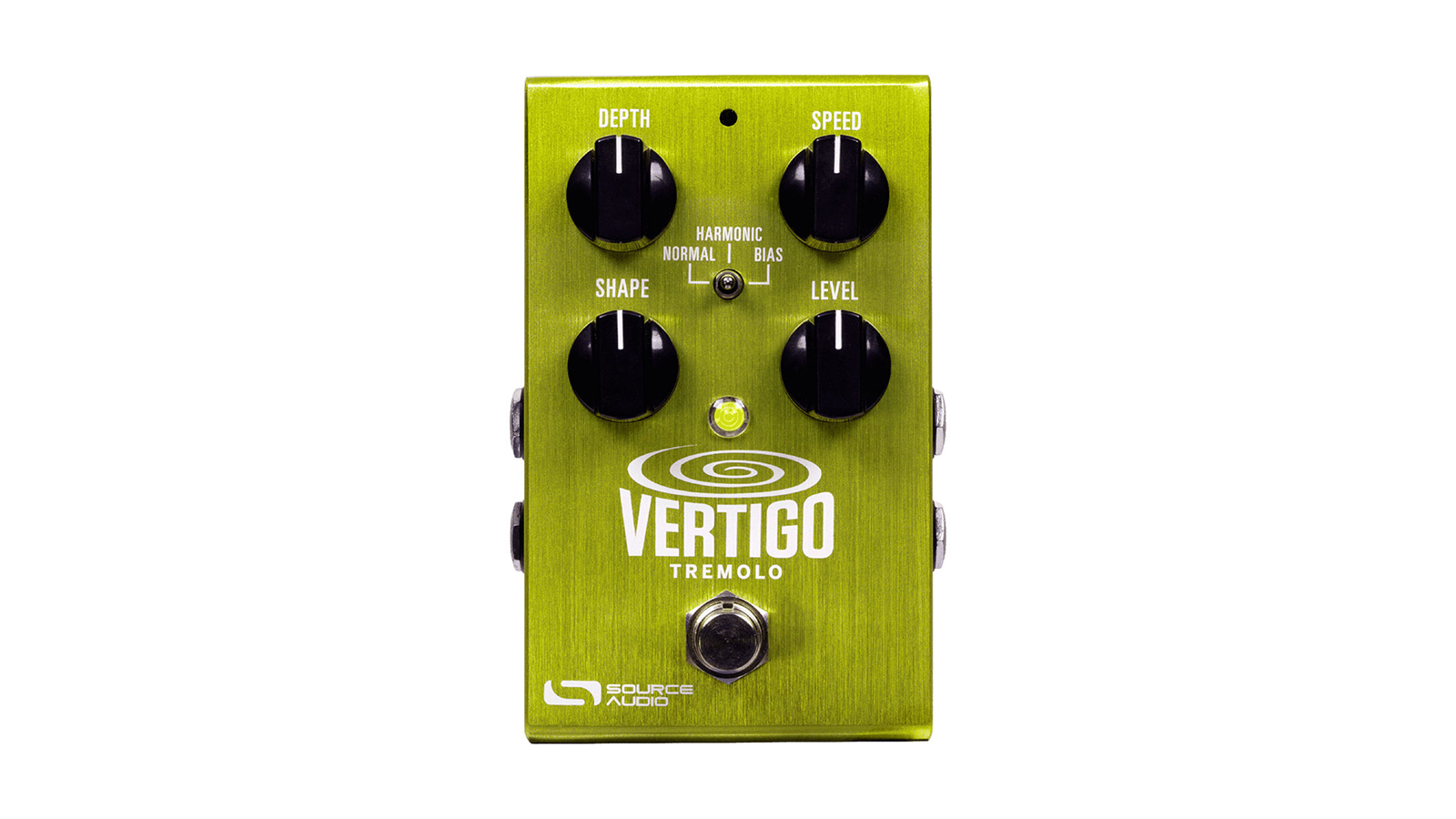
Specifications
Reasons to buy
Reasons to avoid
The digital experts at Source Audio perfected the sound of three of the most iconic amp tremolo sounds with the Vertigo: the optical-style tremolo from a 1967 Fender Vibrolux; the Fender ‘brownface’ series’ Harmonic wobble; and a Bias sound, similar to the tremolo on a Vox AC30.
There’s more to it than that, of course, thanks to the shape control. This adjusts between square wave, sawtooth and everything in between, while Source Audio’s Neuro app can take the sounds into entirely different realms. The Vertigo combines authenticity and eccentricity in perfect harmony.
Read the Source Audio Vertigo review
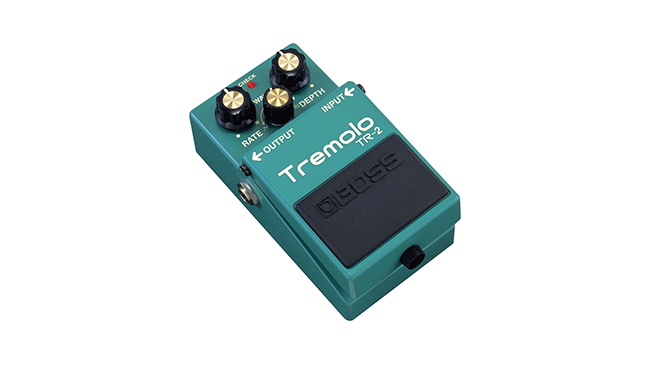
2. Boss TR-2
Specifications
Reasons to buy
Reasons to avoid
Once again, Boss is responsible for the industry standard in this arena, with the TR-2 serving active duty on countless pedalboards worldwide. Its no-nonsense operation is key to its appeal, with just rate, depth and wave controls on hand to adjust the pedal’s LFO waveform.
That’s not to say it’s not versatile: there’s a great range of speed and shape options here, from a gentle triangular undulation through to machine gun-style square-wave chops, as heard on a number of Tom Morello cuts. The lack of volume control is the pedal’s only downside, but Boss’s rock-solid build quality means it won’t be breaking down any time soon.
- Stuck in a loop? You will be with our guide to the best looper pedals
- Or you could embrace the fuzz with the best fuzz pedals
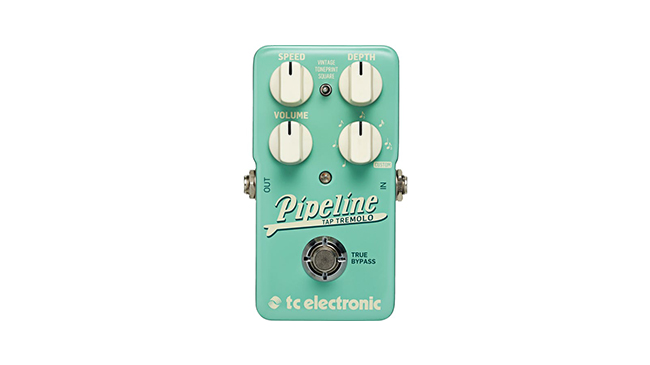
3. TC Electronic Pipeline
Specifications
Reasons to buy
This digital effort is most notable for its built-in tap tremolo for on-point tremolo times – simply hold the footswitch down for two seconds, then get stomping. A subdivision knob enables you to adjust the ratio of the wave, giving you a precision-engineered stutter.
The Pipeline also packs an onboard volume knob to counter any perceived volume loss, plus two classic sounds: a vintage, American-style amp tremolo and a more aggressive square wave cut. TC’s TonePrint technology expands the sound set even further via its computer-based editing software and smartphone preset beaming.
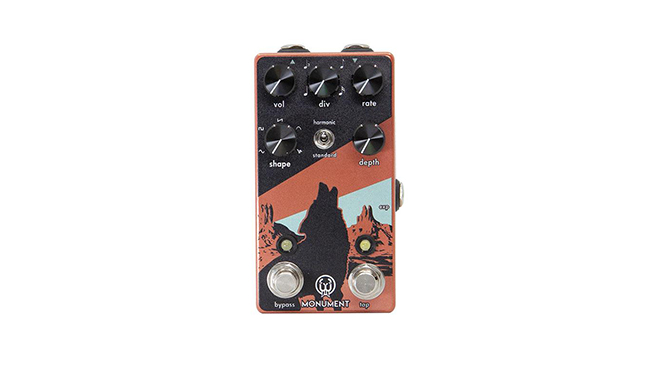
4. Walrus Audio Monument V2
Specifications
Reasons to buy
Reasons to avoid
This expansive pedal boasts both harmonic and regular tremolo; the former is a chewier setting based on Fender’s ‘brownface’ amps, while the latter provides a more traditional amp-style wobble.
There are a host of other tricks onboard, including a separate tap tempo footswitch (with division knob), momentary bypass feature, and a comprehensive wave control, which delivers sine, square, ramp, lumps and a random Monument Mode. For 2019, Walrus downsized the pedal into a compact enclosure, and expanded its expression pedal-controllable options to boot.
- Time to get heavy with the 10 best distortion pedals for metal
- Hate metal? Add more expression with the best wah pedals
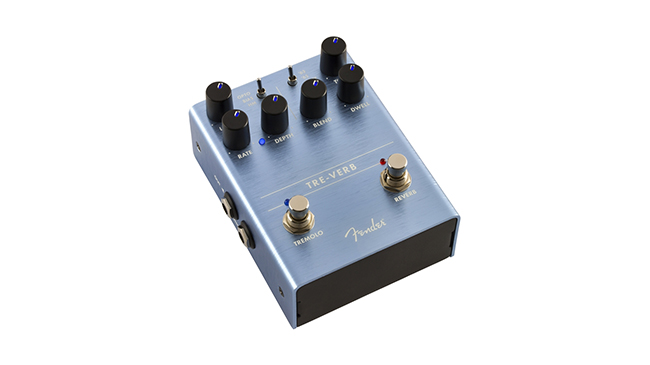
Specifications
Reasons to buy
Reasons to avoid
Fender’s feature-rich Tre-Verb combines its own greatest hits of tremolo and reverb in one pedal. On the tremolo side, you get the choice of three iconic Fender sounds: Optical, Bias and Harmonic, the latter of which gives a more uni-vibe tone to proceedings.
There’s also a tap tempo footswitch for the tremolo tones, as well as a level control. Add in three reverb types – ’63 and ’65 spring types, plus a plate setting – and you’ve got a one-stop shop for vintage amp effects.
Read the Fender Tre-Verb review
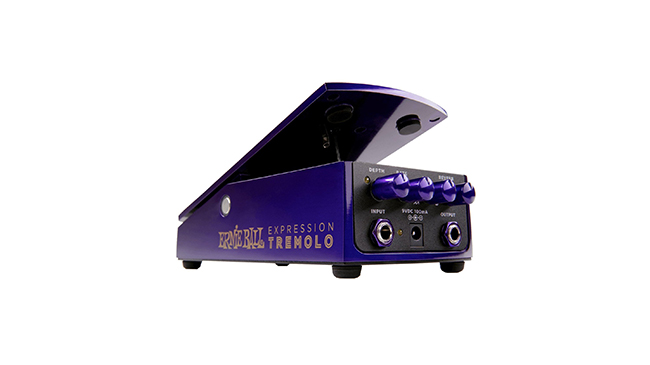
Specifications
Reasons to buy
If you want on-the-fly control over your tremolo tones (the secret to really nailing Link Wray’s Rumble), Ernie Ball’s Expression Tremolo is your best bet, offering adjustment over rate, depth or both via its built-in treadle.
It’s a particularly versatile offering, too, boasting five waveforms (slow rise, slow fall, sine, square and harmonic), as well as an onboard spring reverb, which can also be controlled using the treadle. The enclosure is reassuringly rugged, utilising EB’s longstanding volume pedal format, with a smooth operation and non-slip grip.
Read the Ernie Ball Expression Tremolo review
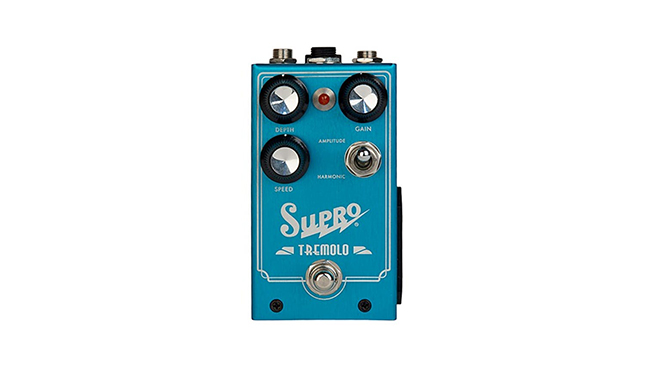
Specifications
Reasons to buy
Reasons to avoid
Supro’s entry in the tremolo market is an altogether dirtier offering than the other options listed here, thanks to a gain knob: turn it up and, rather than up the volume, it adjusts preamp gain to add overdriven texture to the tremolo.
Accordingly, a host of gritty, vintage-style tones are available, particularly with the choice of two ’60s-inspired tremolo sounds: traditional Bias shimmer, and the altogether phasier Harmonic mode. These sounds are adjusted with standard depth and speed knobs, while you can add an external expression pedal to tweak the speed mid-lick.
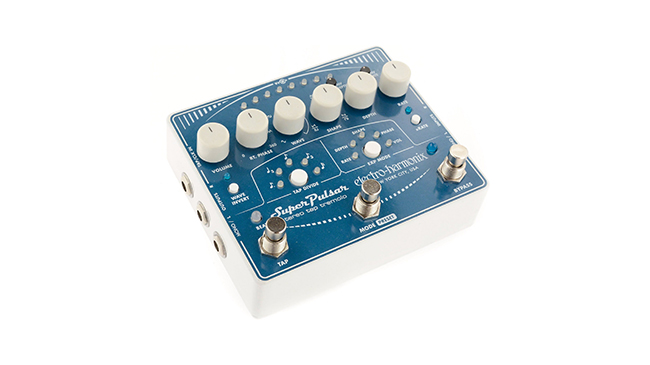
8. Electro-Harmonix Super Pulsar
Specifications
Reasons to buy
Reasons to avoid
Pimping EHX’s Pulsar to the nth degree, the Super Pulsar delivers digital control of analogue stereo tremolo. Shape, depth and rate handle the usual trem duties, but take the wave control over halfway and the shape knob becomes a rhythm selector, complete with a full eight-step sequencer and some great preset patterns.
Then there’s the envelope circuit, which adjusts the depth and rate according to your playing dynamics, plus expression control over any parameter. Glitchy rhythms, rapid-fire blips, flutey fade-ins… it’s all here, and while it’s not the most straightforward of modulations, creative guitarists with time on their hands will find a lot to love.
Get the MusicRadar Newsletter
Want all the hottest music and gear news, reviews, deals, features and more, direct to your inbox? Sign up here.
Mike is Editor-in-Chief of GuitarWorld.com, in addition to being an offset fiend and recovering pedal addict. He has a master's degree in journalism, and has spent the past decade writing and editing for guitar publications including MusicRadar, Total Guitar and Guitarist, as well as a decade-and-a-half performing in bands of variable genre (and quality). In his free time, you'll find him making progressive instrumental rock under the nom de plume Maebe.
“A pedal that sings with harmonic richness and blooming touch response”: Tone King offers up boutique tube amp tones for your pedalboard with the Imperial Preamp
“Each and every unit is perfectly dialled in to the 'sweet spot' that can be so elusive to find in vintage pedals”: Pigtronix’s Gas Giant is a high-gain fuzz pedal with a FET-driven onboard noise gate
